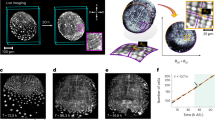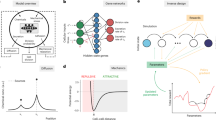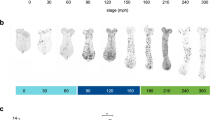Abstract
THE confusion concerning the relationship between growth and form in animal development is quite deep and widespread and possibly stems from the title of D'Arcy Thompson's great book1, together with the botanists' emphasis on localized growth zones such as the apical meristem. Our attention was drawn to this during our studies on budding in hydra2, where it had always been assumed that formation of a new hydra by budding was partly the result of localized growth at the base of the bud. From our experiments it now seems that bud elongation does not require cell growth and division but is a morphogenetic process involving cell movement and changes in cell contact. This led us to question whether cell growth and division ever determine in a significant manner the form, as distinct from size, of animal tissues and we have had difficulty in finding examples where this is obviously the case. Orientated cell divisions in early development contribute to the morphogenesis of the blastula3 and are almost certainly important for the determination of form in mosaic embryos. In these cases it is the plane of cell division and not growth that is important. The growth of certain insect structures involves orientated cell divisions and is one of the very few cases where growth seems to determine form4. Form seems to be determined by the spatial relationship between the cells which may be largely determined by cell movement and cell contact3.
This is a preview of subscription content, access via your institution
Access options
Subscribe to this journal
Receive 51 print issues and online access
$199.00 per year
only $3.90 per issue
Buy this article
- Purchase on SpringerLink
- Instant access to full article PDF
Prices may be subject to local taxes which are calculated during checkout
Similar content being viewed by others
References
Thompson, D'Arcy W., On Growth and Form (Cambridge University Press, 1941).
Clarkson, S. G., and Wolpert, L., Nature, 214, 780 (1967).
Gustafson, T., and Wolpert, L., Biol. Rev., 42, 442 (1967).
Bryant, P. J., Devl. Biol. (in the press).
Amprino, R., in Organogenesis (edit. by de Haan, R. C., and Ursprung, H.), 255 (Holt, New York, 1965).
Zwilling, E., Adv. Morphogen., 1, 310 (1961).
Saunders, J. W., J. Exp. Zool., 108, 363 (1948).
Wolpert, L., J. Theoret. Biol., 25, 1 (1969).
Ede, D. A., and Law, J., Nature, 221, 244 (1964).
Jurand, A., Proc. Roy. Soc., B, 162, 387 (1965).
Peterfi, T., Z. Wiss. Mikr., 38, 342 (1921).
Searls, R. L., J. Exp. Zool., 166, 39 (1967).
Schmalhausen, J., Arch. Entwicklungsmech., B108, 322 (1926).
Nowinski, W. W., and Yushok, W. D., Biochim. Biophys. Acta, 11, 487 (1953).
Author information
Authors and Affiliations
Rights and permissions
About this article
Cite this article
HORNBRUCH, A., WOLPERT, L. Cell Division in the Early Growth and Morphogenesis of the Chick Limb. Nature 226, 764–766 (1970). https://doi.org/10.1038/226764a0
Received:
Issue date:
DOI: https://doi.org/10.1038/226764a0
This article is cited by
-
Anisotropic stress orients remodelling of mammalian limb bud ectoderm
Nature Cell Biology (2015)
-
Understanding morphogenetic growth control — lessons from flies
Nature Reviews Molecular Cell Biology (2011)
-
Growth Based Morphogenesis of Vertebrate Limb Bud
Bulletin of Mathematical Biology (2008)
-
Cell lineage transport: a mechanism for molecular gradient formation
Molecular Systems Biology (2006)
-
Deciphering skeletal patterning: clues from the limb
Nature (2003)



